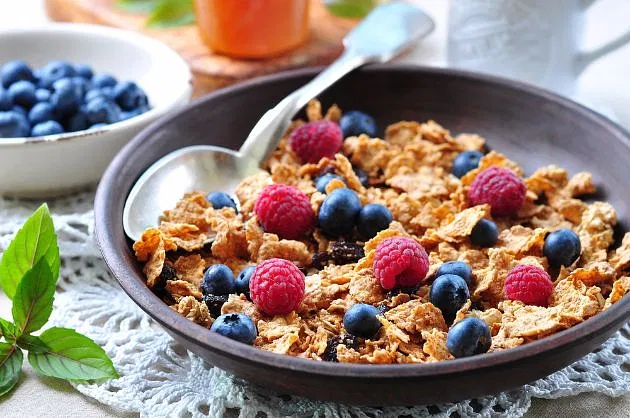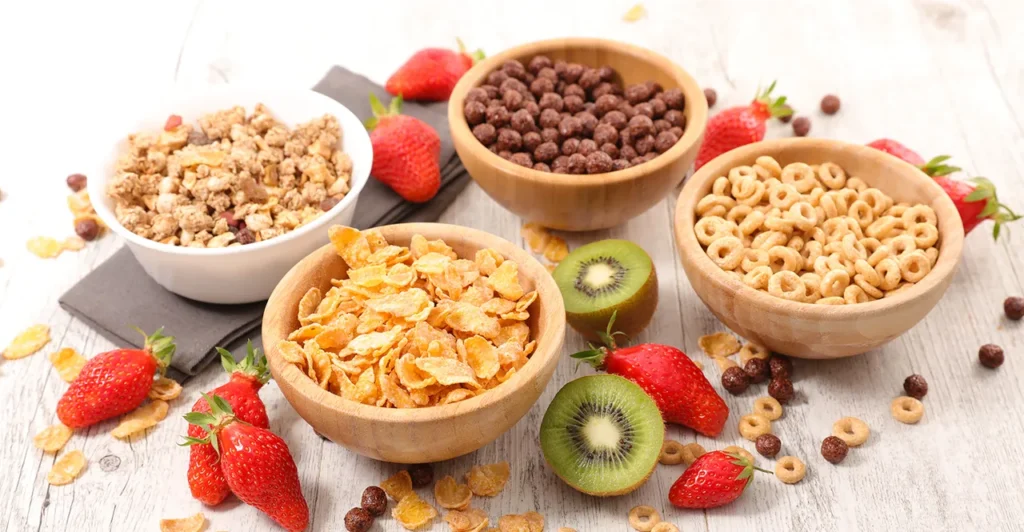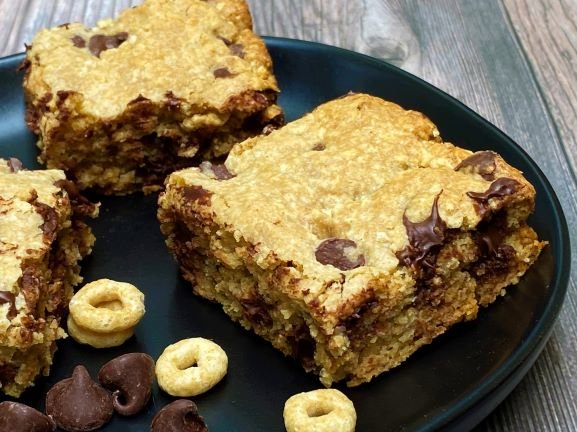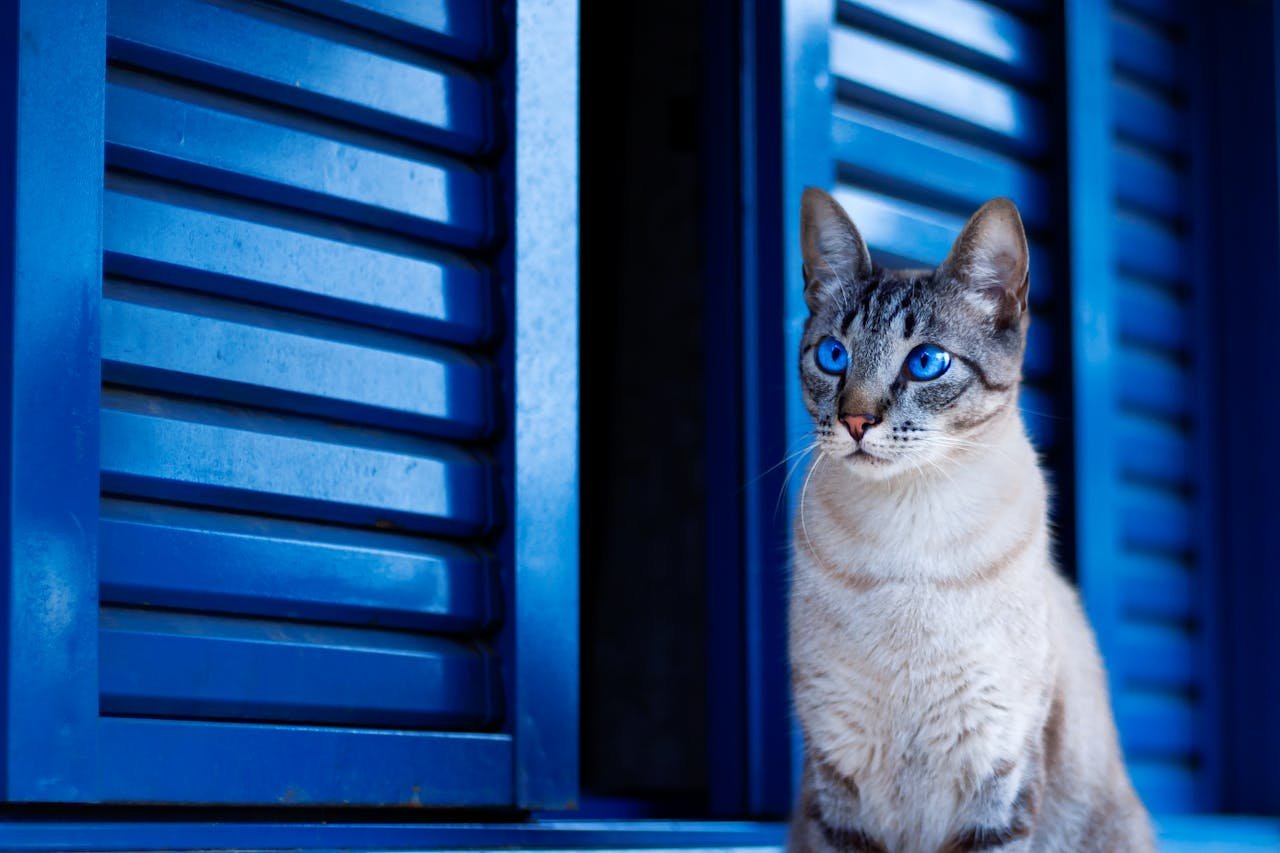Can Cats Eat Cheerios? Discover What Every Cat Owner Needs to Know in 2025
Cats should not eat Honey Nut Cheerios, even though these cereals are not considered toxic to felines. While giving your cat a single Cheerio occasionally may not cause immediate harm, it’s important to understand that Cheerios provide no nutritional value for cats and contain ingredients that can negatively impact their health over time. Honey Nut Cheerios are made with sugar, honey, and artificial flavors—none of which are suitable for a cat’s digestive system. Cats are obligate carnivores, meaning their bodies are designed to thrive on animal-based proteins, not grains or sugary cereals. Regular consumption of Honey Nut Cheerios, even in small quantities, can lead to weight gain, blood sugar spikes, digestive discomfort, and even serious conditions like feline diabetes or pancreatitis. Furthermore, feeding your cat human snacks can create bad eating habits and lead to picky behavior or nutritional deficiencies. As we move into 2025, modern pet care emphasizes species-appropriate diets, and offering processed cereals like Cheerios simply doesn’t align with a healthy, balanced feline lifestyle. If you’re looking to treat your cat, opt for vet-approved, protein-rich snacks made specifically for felines, which support their overall well-being and avoid the risks associated with human food.
Can Cats Eat Cheerios? A Complete 2025 Guide for Smart Cat Parents
While your cat may be able to nibble on a Cheerio or two without showing immediate signs of illness, that doesn’t mean Cheerios are a healthy or appropriate treat for felines. Cheerios, including varieties like Honey Nut and plain, contain ingredients such as sugar, corn starch, and brown sugar syrup, which offer zero nutritional value and may contribute to long-term health issues like obesity, digestive imbalances, or even diabetes if consumed regularly. Even if your cat doesn’t react negatively at first, offering human cereals as truants can slowly lead to problems you might not notice until it’s too late. Instead of processed snacks like cat eat Cheerios, modern veterinary advice in 2025 recommends offering species-appropriate treats such as freeze-dried meat, boiled chicken, or grain-free, vet-approved cat treats that align with your pet’s dietary needs. Feeding your cat healthy alternatives not only supports their digestion and energy levels but also helps you build a more balanced and responsible feeding routine that promotes longevity and wellness. So, while a Cheerio here and there won’t hurt, it’s best to skip the cereal bowl and stick to feline-friendly options that truly nourish your cat from the inside out.
Can Cats Consume Cheerios? A Smart 2025 Guide for Cat Lovers
You might find your curious cat sniffing around your breakfast bowl, but when it comes to Cheerios—whether plain, Honey Nut, or chocolate-flavored—it’s best to keep this cereal out of your pet’s diet. While regular Cheerios aren’t immediately toxic to cats, they offer no nutritional benefit and can actually cause harm if fed regularly. Cats require protein-rich, meat-based diets to stay healthy, and processed cereals like Cheerios are filled with sugar, starches, and artificial ingredients that have no place in a feline’s nutrition plan. Even worse, flavored varieties like chocolate Cheerios contain theobromine—a compound that is highly toxic to cats and can lead to serious medical emergencies. The Honey Nut version isn’t safe either, as it contains excess sugar and unhealthy fats that can contribute to obesity, diabetes, and digestive problems over time.
Feeding your cat Cheerios is like giving them empty calories—just like humans gain weight and face health issues from junk food, cats are at risk when their diet includes non-essential, carbohydrate-heavy snacks. In 2025, pet health experts continue to emphasize the importance of species-appropriate nutrition. So, instead of sharing your cereal, reach for cat-safe alternatives like freeze-dried chicken bites, boiled meat, or specially formulated treats that support energy, immune health, and digestion. Your cat deserves treats that offer real value—not just fillers. Choose wisely and keep your feline’s health a top priority.
Related Post: Can Cats Eat Cheez Its Without Harm? Truth You Need!
Can Cats Eat Cereal? A 2025 Vet-Informed Perspective for Cat Owners
The small size and crunchy texture of dry cereal make it easy for cats to pick up and chew, and when moistened by saliva, cat eat cereal becomes even softer—sometimes more so than traditional dry kibble. However, just because cats can chew and swallow cereal doesn’t mean they should. In fact, the real concern isn’t whether cats can physically eat cereal, but whether it’s nutritionally appropriate—and the answer is a clear no.
Cereals are manufactured for human consumption and are typically loaded with ingredients like sugar, refined grains, artificial flavors, and preservatives—none of which support your cat’s health. Cats are obligate carnivores with digestive systems uniquely tailored for animal proteins and essential amino acids like taurine, which cereal lacks entirely. Feeding cereal regularly, or even as an occasional treat, can lead to issues such as weight gain, upset stomach, or long-term nutritional imbalances. There’s also a small risk of choking if the cereal isn’t chewed properly, though this is rare and usually mitigated by the cat’s saliva softening the food.
In 2025, informed pet ownership is about more than avoiding toxic foods—it’s about choosing options that genuinely support your cat’s longevity and well-being. So, while your cat might be curious about your cereal bowl, it’s best to keep cereal as a human-only snack and instead offer protein-rich, vet-approved treats designed for feline dietary needs.
Potential Health Risks of Cats Consuming Cheerios
Sugar Content
- Cheerios, especially flavored versions like Honey Nut, contain added sugars and sweeteners.
- Cats do not need sugar in their diet and cannot taste sweetness.
- Excess sugar can lead to:
- Obesity
- Insulin resistance
- Diabetes mellitus
- Chronic inflammation
- Gastrointestinal issues (vomiting, gas, diarrhea)
- Obesity
Grain Content
- Cheerios are made with grains like whole grain oats, corn starch, and brown sugar syrup.
- Upset their digestive system
- Cause food sensitivities or allergies
- Contribute to unnecessary weight gain
- Displace essential animal proteins from their diet
- Upset their digestive system
Carbohydrate Overload
- Cats lack the enzymes to properly metabolize large amounts of carbohydrates.
- Cereal-based carbs (from sugar and grains) can result in:
- Bloating and gas
- Vomiting or diarrhea
- Long-term metabolic dysfunction
- Higher risk of feline obesity and diabetes
- Poor nutrient absorption leading to deficiencies
- Bloating and gas
Healthier Treat Options for Cats
When it comes to rewarding your feline friend, it’s important to choose treats that align with their biological needs rather than human preferences. That’s why selecting healthier treat options isn’t just about indulgence—it’s about supporting their long-term health and vitality.
Cooked Meat or Fish: A Natural Protein Boost
One of the best treat choices for cats is small pieces of cooked chicken, turkey, or fish, served plain and without any bones, seasoning, or oils. These protein-rich foods mimic what cats would naturally eat in the wild and provide vital nutrients like taurine, which is essential for heart and vision health. When served in moderation, these high-quality proteins contribute to muscle development and sustained energy without any of the harmful additives found in processed snacks.
Low-Lactose Cheese: A Creamy Occasional Delight
While most cats are lactose intolerant, certain low-lactose cheeses like cottage cheese or specially formulated cat-safe dairy alternatives can be given occasionally. The key is to offer these in very small quantities and observe your cat for any signs of digestive discomfort. If tolerated, cheese can serve as a protein-rich reward and an exciting change of taste and texture from their usual meals.
Feline-Safe Fruits and Vegetables: Fiber with Benefits
Though not a staple in a cat’s diet, a few cat-safe fruits and vegetables such as steamed carrots, green beans, or a sliver of apple (peeled and seedless) can provide gentle fiber and beneficial antioxidants. These natural additions can aid digestion and help prevent hairballs, especially in long-haired breeds. Offering them lightly cooked and in small amounts ensures they’re easy to digest and won’t interfere with your cat’s primary nutrition.
Vet-Approved Commercial Cat Treats: Balanced and Convenient
For busy pet parents, commercially prepared cat treats are a practical option, especially those designed by veterinarians and nutritionists to complement a feline’s dietary requirements. These treats are formulated to include essential nutrients like taurine, omega fatty acids, and added vitamins while maintaining low carbohydrate content. Always choose high-protein, grain-free options with minimal fillers and artificial ingredients to ensure your cat is getting the best.
By choosing treats that support your cat’s unique dietary needs, you’re not just making snack time more enjoyable—you’re actively contributing to their health and happiness. In 2025, responsible pet care means going beyond what’s convenient and choosing what’s truly beneficial. So skip the cereal and offer treats that nourish your cat’s body just as much as they satisfy their taste buds.
Can Cats Eat Dry Cereal?
Many cat owners assume that giving their feline dry cereal—without milk—is a safer alternative, especially knowing that most cats are lactose intolerant. On the surface, this might sound logical: no dairy, no digestive upset. But while skipping the milk avoids one issue, the dry cereal itself presents an entirely different set of problems that are often overlooked.
Dry cereal, even when served plain, is still not a suitable snack for cats. The core issue lies in what cereal is made of—grains, sugars, starches, and artificial additives that offer no biological benefit to a carnivorous animal like a cat. While cats can chew and swallow cereal pieces without choking, their bodies aren’t equipped to process the carbohydrate-heavy ingredients commonly found in human breakfast foods. Unlike omnivores, cats have evolved to derive energy and nutrients from animal protein, not plant-based grains or refined sugar.

Even in small amounts, dry cereal can lead to digestive irritation, gas, or vomiting—especially in cats with sensitive stomachs. Over time, regular consumption may contribute to unhealthy weight gain, blood sugar imbalances, or even early-onset feline diabetes. And because cereal contains no essential amino acids like taurine, it ends up displacing more nutritious food in your cat’s diet without offering anything of value in return.
erning is that many of these health issues are preventable. By simply avoiding sugary cereals like Honey Nut Cheerios, you can protect your cat from digestive troubles, weight problems, and long-term illnesses. While sharing a small treat with your cat may seem harmless, it’s always best to choose snacks that are species-appropriate and nutritionally beneficial.
In 2025, being a responsible pet owner means understanding that even seemingly mild indulgences like a few pieces of Honey Nut Cheerios can accumulate into serious health risks over time. Instead, focus on vet-approved cat treats or high-protein snacks that support your cat’s natural dietary needs.
How Much Cheerios Can Cats Eat?
When it comes to feeding Cheerios to cats, the honest answer is simple: none at all. Cats should not be eating Cheerios in any amount, regardless of the flavor or type. These cereals are not designed with feline health in mind and offer zero nutritional benefit to your cat. Since cats are obligate carnivores, their digestive systems are tailored to process animal proteins and fats—not grains, sugars, or additives commonly found in Cheerios.
That said, if your cat happens to snatch a single piece of Cheerios that fell off the table, there’s no need to panic. One or two pieces won’t poison your cat or cause immediate harm. However, it’s important to understand that Cheerios only become dangerous when they’re consumed regularly or in larger quantities, especially over time. Repeated exposure to ingredients like sugar, salt, and processed grains can lead to digestive upset, obesity, diabetes, or nutritional deficiencies, all of which impact your cat’s long-term health.
In some cases, even a tiny amount may lead to mild diarrhea or stomach discomfort, particularly if your cat has a sensitive gut or isn’t used to non-meat foods. Though vomiting is rare after such a small amount, signs like bloating, gas, or changes in appetite may appear if consumption becomes a habit. So while an accidental nibble might not be a big deal, feeding Cheerios as a treat or snack is a clear no-go in the eyes of any feline nutrition expert.
For cat parents in 2025, the goal is to prioritize species-appropriate, nutrient-rich diets that align with your pet’s natural biology. Cheerios might be a convenient and harmless snack for humans, but they’re not part of a healthy feline diet—not even in small amounts.
Considerations Before Feeding Cheerios to Cats
Before offering Cheerios to your cat, it’s essential to consider their natural dietary needs. Cats are obligate carnivores, meaning their bodies are built to digest animal-based proteins—not grains, sugars, or processed cereals. While Cheerios may seem harmless, ingredients like oats, corn, and added sugars provide no nutritional value and can contribute to allergies, digestive upset, or long-term health issues like obesity and diabetes. In 2025, cat nutrition demands species-appropriate diets, and Cheerios simply don’t align with that. For your feline’s well-being, it’s always best to stick to vet-approved, protein-rich foods designed specifically for cats.
Related Post: Can Cats Have Cinnamon Toast Crunch for the Best Snack?
Can Cats Eat Whole Wheat Cheerios?
Whole wheat or whole grain Cheerios are often marketed as a healthier option for people looking to improve their diet with more fiber and less processing. However, when it comes to cats, this “healthier” label doesn’t translate. In fact, whole wheat Cheerios are just as unsuitable for feline consumption as regular Cheerios—and potentially more problematic due to certain ingredients that cats are not biologically equipped to process.

These cereals contain a mix of whole grain oats, corn, rice, corn starch, brown sugar syrup, salt, and other plant-based fillers. While these may be beneficial for humans, cats are obligate carnivores who thrive exclusively on nutrients derived from animal proteins. Grains and oats aren’t just unnecessary—they can be harmful, especially when introduced to a cat’s diet unexpectedly.
Short-term effects of grains and oats in your cat’s diet may include:
- Allergic reactions, such as itching or gastrointestinal upset
- Food intolerance, especially if your cat has never consumed grains before
- Dry, flaky skin, which can lead to excessive scratching and discomfort
- Poor coat quality, resulting in dull, brittle fur lacking its natural shine and thickness
The issue doesn’t stop at grains. Whole wheat Cheerios also contain about 8 grams of sugar per serving, which equals roughly 16% of a human’s recommended daily intake. For a cat, who requires zero sugar in their diet, that amount is extreme and potentially dangerous. Cats lack the metabolic capacity to handle sugar, and its presence in their system can lead to:
- Blood sugar spikes
- Weight gain
- Insulin resistance
- Long-term risks like feline diabetes
It’s important to understand that these cereals are formulated with human nutrition in mind, not feline physiology. Every core ingredient—whether it’s oats, rice, corn, or sugar—serves no purpose in a cat’s diet and may cause short- or long-term health complications if consumed regularly.
In 2025, with greater emphasis on species-appropriate feeding, pet experts strongly advise against offering cereals like whole wheat Cheerios to cats. Instead, focus on protein-rich, low-carb foods and treats that cater specifically to your cat’s evolutionary and nutritional needs.
Can Cats Eat Honey Nut Cheerios?
While Honey Nut Cheerios may be a nostalgic breakfast favorite for many households, they are completely inappropriate for feline consumption. Despite their appealing name and sweetened taste, these cereals contain ingredients that do more harm than good when it comes to your cat’s delicate digestive system.
Unlike whole grain Cheerios, Honey Nut Cheerios not only contain fewer whole grains but also introduce additional sugars and sweeteners—primarily honey and sugar syrup. Although honey may offer minor health benefits for humans, it has no nutritional value for cats and only serves to raise the sugar and sodium content in the cereal. In fact, Honey Nut Cheerios contain 12 grams of sugar per serving, a notable increase compared to the 8 grams found in regular whole grain Cheerios.

This extra sugar may seem trivial from a human perspective, but for a cat—a much smaller creature with a completely different metabolic structure—4 additional grams of sugar can be significant and dangerous. Cats are obligate carnivores with no biological need for sugar, and their bodies are not equipped to process it properly. As a result, consuming sugary foods like Honey Nut Cheerios can quickly lead to serious health concerns.
Over time, sugar intake in cats can result in:
- Vomiting and stomach upset, especially if they’ve never consumed sugar before
- Diarrhea, due to a lack of the enzymes needed to digest sugars
- Bloating and discomfort, caused by digestive distress
- Excessive weight gain, which puts pressure on joints and internal organs
- Increased risk of diabetes, a life-altering condition in felines
- Dental decay, as sugar feeds bacteria that contribute to plaque and tooth loss
What’s most concord grains to added sugars and artificial ingredients, these cereals are simply not aligned with a cat’s carnivorous dietary needs. If your furry friend accidentally nibbles on one or two, there’s usually no harm done—but it’s best not to make it a habit. Instead, focus on species-appropriate treats that fuel your cat’s well-being. Your cat deserves the healthiest, happiest life—and that starts with what’s in their bowl.
Final Thoughts
In 2025, being a responsible cat parent means staying informed about what truly supports your feline’s health. While Cheerios may be a wholesome breakfast choice for humans, they offer no nutritional value for cats and may even pose risks when consumed regularly. From processIn 2025, responsible pet care means understanding that what’s harmless for humans may be completely inappropriate for cats. Instead of offering your pet dry cereal, consider vet-recommended treats that align with their unique dietary needs—high in protein, low in carbs, and free from unnecessary fillers. Your cat’s health is far too important to gamble with empty calories.
Frequently Asked Questions About Can Cats Eat Cheerios?
Can Cats Eat Cheerios?
No, cats should not eat Cheerios. Though not toxic, they contain grains, sugar, and additives that have no place in a cat’s meat-based diet. Even small amounts offer no benefit and may lead to digestive or long-term health issues.
Are Cheerios Safe for Cats in Small Amounts?
One or two Cheerios won’t likely harm your cat, but that doesn’t make them safe or healthy. Cheerios are empty calories for felines and may cause mild stomach upset, especially in sensitive cats.
Why Are Cheerios Bad for Cats?
Cheerios are high in carbs, sugar, and processed grains—ingredients your cat’s body can’t effectively digest. Over time, feeding cereal may lead to allergies, obesity, or even diabetes in cats.
Can Cats Eat Whole Grain or Honey Nut Cheerios?
Whole grain or Honey Nut Cheerios are still unsuitable for cats. The added sugar, honey, and salt can be harmful, and whole grains offer no nutritional value to a carnivorous feline.
What Should I Do If My Cat Ate Cheerios?
If your cat eats a few Cheerios, there’s usually no need to panic. Avoid giving more in the future and stick to treats made for cats.
For More Visits: SiameseMania
Also Read: Flame Point Ragdoll Cat Guide | Expert Tips for 2025
